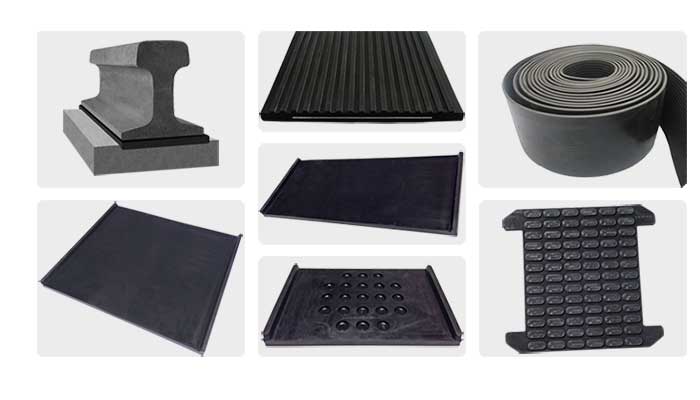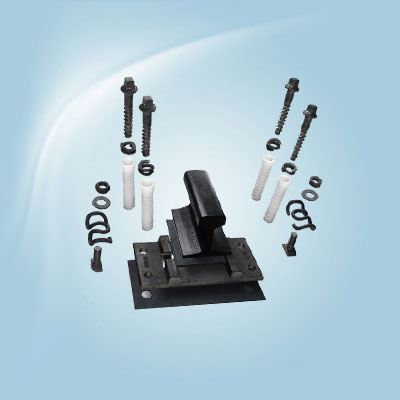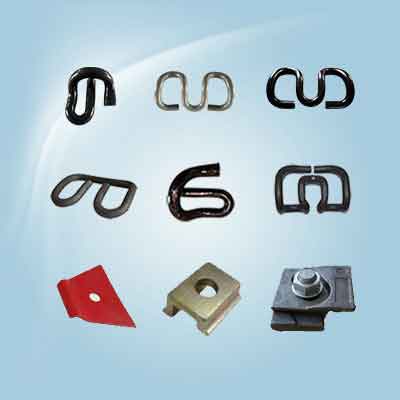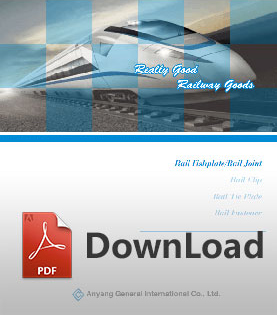Rail connection overview-part 2: rail fastening

Rail connection means the rail components that connect two steel rails or connect steel rail and railway sleepers. Rail connection keeps the rail in gauge and ensures the rail safety. The rail connection generally includes two parts: rail join fastening and Intermediate fastening. AGICO GROUP, a professional manufacture of rail components. We will detail Intermediate fastenings.
Intermediate fastening
Intermediate fastening, it also called rail fastening. Rail fastening fasten the rail on railway sleeper. Rail fastening should keep the connection between rail and railway sleeper long and availably. So that all rail fastenings must have enough strength, durability and elasticity, etc. Besides, rail fastening usually have simple structure, it is easy to install and removal. Common rail fastening including railroad spike, rail clip, tie plate and rail pad, etc.
Railroad spike
Railroad spike is used to fasten steel rail on the railway sleeper. The railroad spike connects rail and railway sleeper to be a unit. Railroad spike increase the rigidity of track panel. The common railroad spikes include two types-dog spike and screw spike.
- The dog spike consists of a duck bill head and a square shank, and its nail point is wedge-shaped. The dog spike gets the name because two lugs on either side of head. The dog spike is generally used with wood sleeper.

- The screw spike works with concrete sleeper. The screw spike has thread on its shank. The common types of screw spike include Ss series sleeper screw, square head screw spike, hexagon screw spike and double-head screw spike.

The railroad spike is generally made of carbon steel or stainless steel. The common standards of railroad spike include GB, DIN, ISO, ANSI/ASTM, B7, JIS etc.
Rail clip
As one of the elastic rail fastenings, the rail clips fasten steel rail on the railway sleeper. In addition, the rigid contact between wheel and rail will produce vibrations. Because the special structure of rail clip, it plays a role in absorbing impact energy generated the passing vehicle. The rail clip work under repeated and alternating stress. It sustains several effects such as bending, torsion, fatigue and corrosion. When train is passing by, rail clip will suffer extremely high instantaneous impact loads. so the performance requirement of the rail clip is strict. The rail clip can be divided into many types such as: E-type, SKL clip, W-type, and etc. The raw material of rail clips is usually forged spring steel.

Tie plate
The tie plate is between steel rail and railway sleeper, it is one of the important components in track structure. Tie plate is used to reduce vibration in the wheel-rail system. Tie plate also play pat in dissipating vertical pressure of steel rail. With the development of heavy train transportation, axle load on rail increase. Tie plate market sets higher requirement for tie plate, including good vibration-reduction, impact resistance and long service time. There are a lot of types of rail tie plate like single shoulder tie plates, double shoulder base plate, casting rail tie plate, base plates for KPO fastening system, AREMA hook twin tie plate, and etc.

Rail pad
Rail pad usually install between steel rail and railway sleeper. Rail pad is mainly used to cushion vibration at high speed and impact. Rail pad not only protect roadbed and railway sleeper, but insulate electric from signal system. With prolonged air exposure, rail pad require good aging resistance, cold and heat resistance. The common rail pads include rubber rail pad, plastic rail pad and etc. among all kinds of rail pad, rubber rail pad works best.

As a connection between steel rail and railway sleeper, rail fastening is important. Rail fastening and rail joint fastening take responsibility for railway safety together.
You may also like:
- Rail Fasteners
- rail fastening system
- rail clip
- railroad spike
- Track bolt
- rail shoulders
- rail anchor
- rail clamp
- tie plate
- Rail Pad
- rail insulator
- rail plastic dowel
- other rail fasteners
- Railway Switch
- SKL series rail fastening system
- Chinese standard rail fastening system
- screw spikes
- Crane rail fastening system
- K type rail clip for Africa
- Hey-Back Rail Fastening
- rail fasteners for Mexican market
- Ss25 screw spike
- Ss35 rail sleeper screw spike
- Ss8 screw spike
- coach screw
- Crane Rail Clip
- Rail Joints (Fishplate)
- Steel Rail
- Railway Sleeper
 rail clip
rail clip
 rail joints
rail joints

 Español
Español English
English
